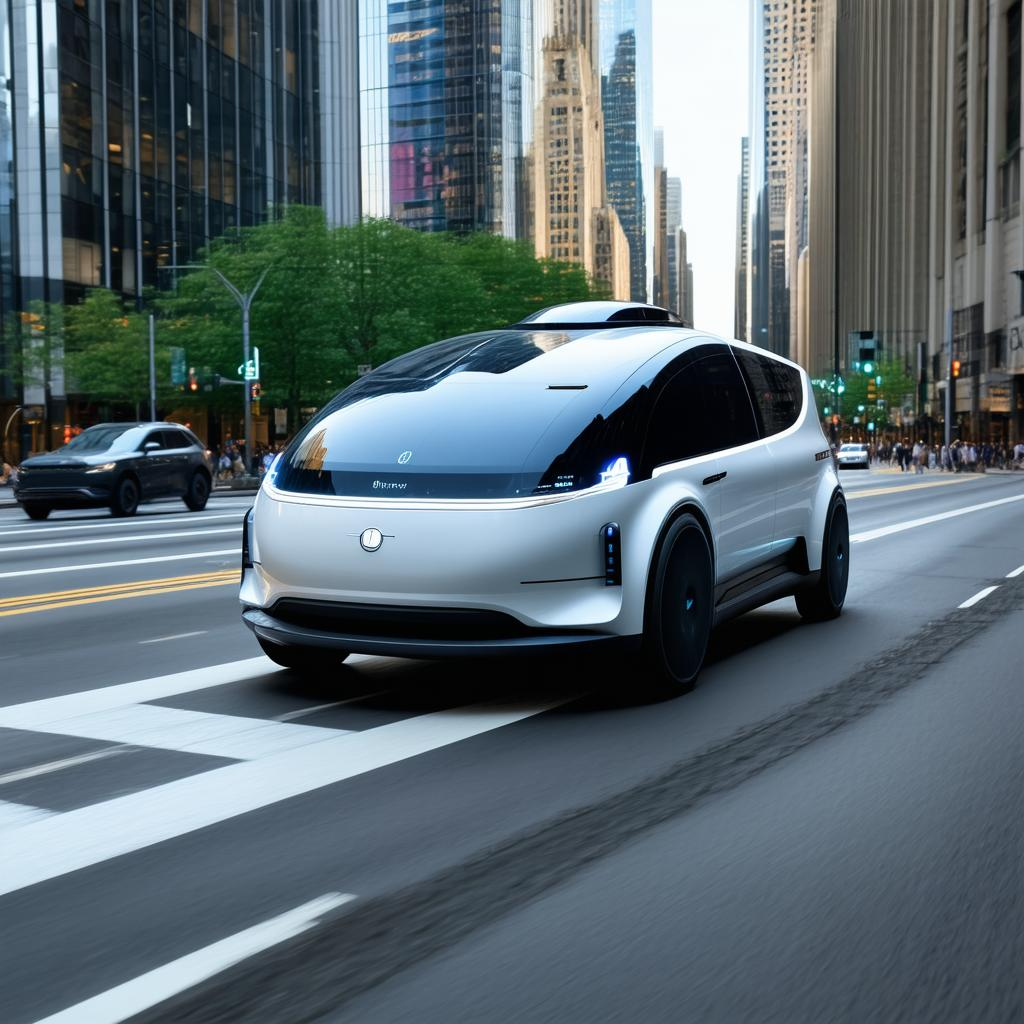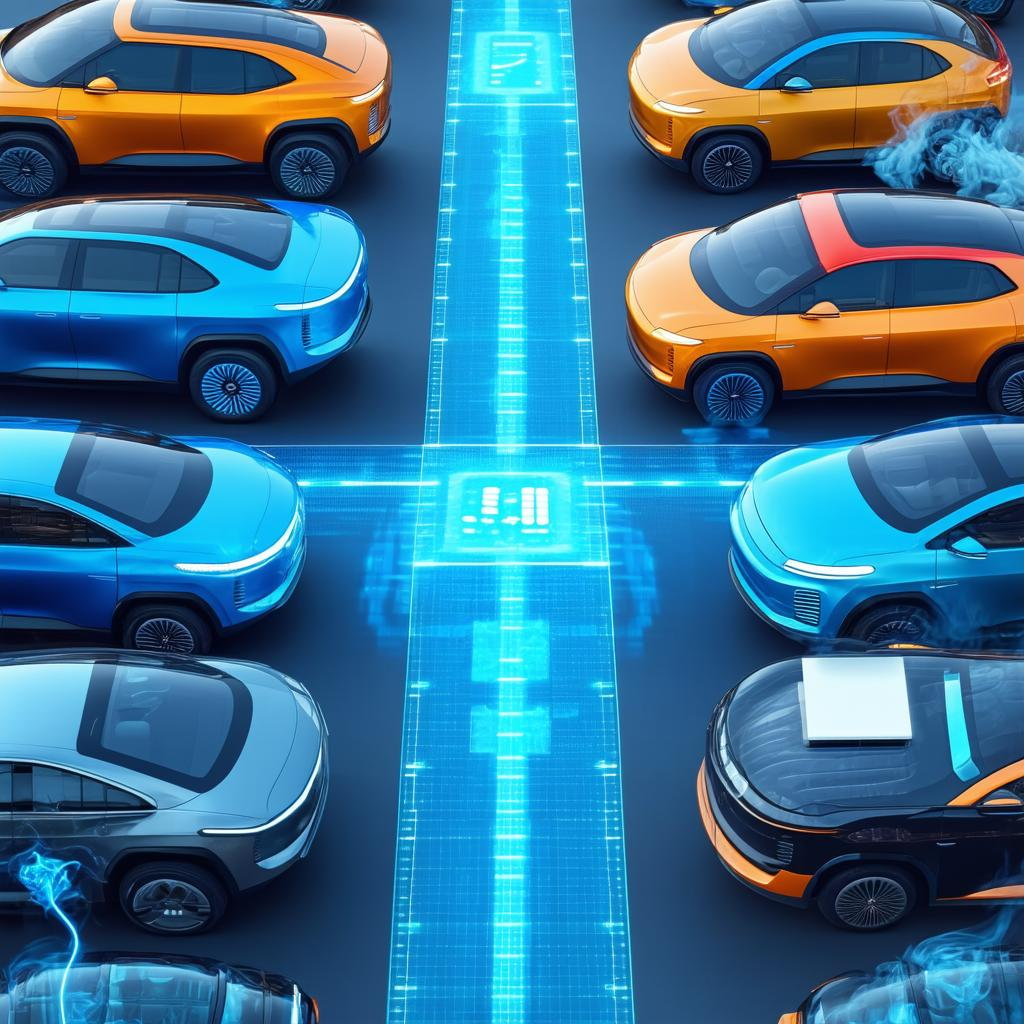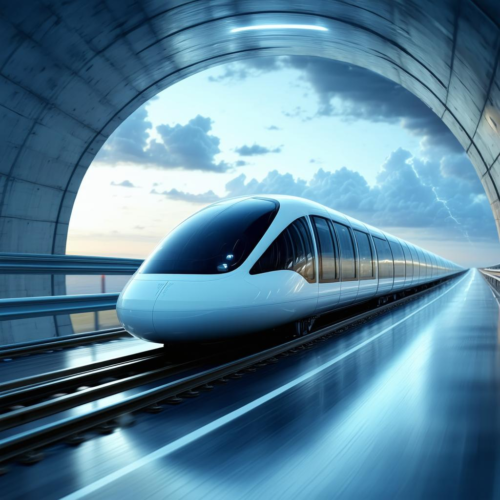The EV Battery Wars: 2025 Innovations
Next-gen batteries shaping the electric revolution.
Explore how next-gen battery technologies in 2025 are reshaping electric vehicles, from innovative solid-state cells to lightning-fast charging solutions, and driving the green revolution forward.
Introduction: A Charged-Up Future
Remember that time—way back in 2020—when you heard somebody say, “Electric cars are the future, but those batteries, man, they’re so clunky”? I sure do. It’s 2025 now, and let me tell you, the EV battery wars are in full swing, with automakers and tech giants battling to create the most energy-dense, longest-lasting, fastest-charging battery out there. If that sounds a bit dramatic, well, it is. And guess what? The drama suits me just fine because new competition usually means better breakthroughs for us, the everyday drivers who just want to cruise around without guzzling gas.
In this era, the stakes aren’t trivial. We’re looking at next-generation cell chemistry, plus an entire wave of manufacturing overhauls that promise to cut charging time, alleviate range anxiety, and streamline the supply chain. Sound complicated? Kinda is. But let’s walk through each piece—step by step, or more accurately, volt by volt—and see how these 2025 EV innovations are transforming the way we power up.
The Lithium-Ion Legacy and Its Evolving Story
Once upon a time, lithium-ion batteries were hailed as a game-changer, powering smartphones, laptops, and electric vehicles with relative ease. Even now, they remain the mainstream choice. Yet, 2025 has introduced advanced variations of lithium-ion technology that push energy density to mind-boggling levels. We’re seeing new cathode compositions, like lithium iron phosphate blended with trace elements, to reduce cost without sacrificing performance. Some companies are going even wilder, experimenting with cobalt-free or nickel-rich designs to address ethical sourcing and raw material volatility.
Still, with great ambition comes a degree of confusion. A neighbor of mine once asked, “So, are we just swapping out bits of the battery recipe and calling it revolutionary?” Not exactly. By tweaking these materials in subtle ways, manufacturers can extend the driving range of an EV by 15% or even 25% beyond yesterday’s models—sometimes pushing 400 or 500 miles on a single charge. That’s a far cry from those early electric sedans that struggled to surpass 200 miles.
“I was skeptical,” says an old friend who bought his EV in 2019 and found himself tethered to the charging station every chance he got. But now, seeing that new batteries are cutting charge times in half, he wonders if it’s time for an upgrade.
Solid-State Marvels and the Road to Mass Production
When it comes to futuristic battery solutions, I can’t help but geek out over solid-state technology. Seriously—imagine your EV using a battery with zero liquid or gel electrolyte inside, dramatically reducing the risk of fires or leaks. By relying on solid conductors, these cells promise lightning-fast charging (sometimes under 15 minutes), insane energy storage capacity, and a longer lifespan.
But there’s a catch: scaling up solid-state manufacturing on a global level remains tricky. Think about it like trying to bake ten thousand perfect croissants simultaneously, each requiring precise ingredients, temperature, and shaping. The potential for a single misstep skyrockets when you ramp up production. That’s why many automakers—names like Toyota, Samsung, and a few new disruptors—are racing to establish pilot lines, perfecting their processes to produce solid-state packs en masse.
Fun fact (though maybe it’s more of a frustration): Some early prototypes showed so much promise that journalists dubbed them “forever batteries,” but we’re still waiting to see if they truly hold up over years of daily use.
Anyway, 2025 is shaping up to be the year of pivot, or a turning point, or maybe a total fiasco if these big players can’t meet their projected timelines. My guess? We’ll see a blend of advanced lithium-ion and the first generation of solid-state EVs coexisting, each aiming to capture a piece of the electric revolution.
Fast Charging Feats: Zap, Charge, and Go
Ever found yourself anxiously tapping your foot at a public charger, thinking, “Hurry up, I’ve got places to be!” You’re not alone. That’s why fast charging is such a big topic in 2025. We’re talking 350 kW chargers becoming mainstream, with experimental 500 kW stations in testing. That means minutes, not hours, to replenish a depleted EV battery. No more planning entire road trips around meandering charge times—just a quick pit stop for coffee and you’re back on the highway.
However, as the speed of charging increases, so does the complexity of the battery’s thermal management. Pushing high currents into a battery too quickly can degrade it if the cells aren’t designed to handle the surge. Enter advanced battery management systems (BMS) that diligently monitor each cell’s temperature, voltage, and overall health. They may even tweak coolant flow or limit the power if they sense potential risks.
I once overheard an EV engineer say, “We can make batteries charge in five minutes if you like bricking them after a dozen cycles.” Well, we wouldn’t want that, right?
The continuing pursuit of faster charging is a balancing act—like juggling. Manufacturers juggle cost, safety, longevity, and infrastructure constraints all at once.
Battery Recycling and Sustainable Supply Chains
Let’s flip the coin: as battery production skyrockets, so does the question of sustainability. It’s not all sunshine and daisies, folks. Mining lithium, cobalt, and nickel can be messy. The conversation around ethical sourcing is more intense than ever, with watchdog groups demanding transparency in how and where raw materials are acquired.
The Rise of Circular Economy Models
The year 2025 brought a surge in battery recycling ventures and “closed-loop” factories, aiming to recapture valuable metals from old or defective packs. A retired coworker of mine, from the days when people dreaded “planned obsolescence,” gleefully told me, “At least now we’re not just trashing these resources—some genius is melting them down and reusing them.” Precisely. If we can re-harvest precious metals, refine them, and shove them back into the production line, that cuts down on environmental damage and ensures a steadier supply.
Yet, critics say we’re still a long way from making recycling cost-competitive. The required processes—think chemical leaching, smelting, purification—are expensive. But hey, if we can pour billions into new battery research, it’s not too far-fetched to see the same or more being invested into recycling tech. After all, an entire green ecosystem of EV parts depends on it.
The EV Battery Wars—Market Showdown
Let’s talk competition. Tesla, GM, Volkswagen, BYD, Lucid—they’re all in the ring, jostling for that top spot. Everyone wants to boast the highest energy density or the quickest charge. Newcomers from China, Europe, and even Indonesia are bringing radical proposals, sometimes touting sodium-ion or magnesium-based cells. It’s kinda reminiscent of watching a high-stakes sports match. Everyone’s chanting, analyzing stats, possibly placing bets on who’ll come out victorious.
And it’s not just about the big dogs. Startups are flourishing, sometimes unveiling wacky but genius ideas like graphene-enhanced electrodes or micro-supercapacitors integrated right into battery packs. Some flounder within months—others land major deals with leading automakers. It’s a roller-coaster environment. On one side, you sense the synergy driving us to a cleaner future. On the flip side, you see the corporate tug-of-war that can hamper cooperation and standardization. I guess that’s where industry consortia come in, aiming to hash out mutual standards for better interoperability.
For additional context on how these industry ties play out, check the external link:
International Energy Agency – Global EV Outlook 2025
My Personal Take—And Slightly Contradictory Thoughts
Okay, confession time. There’s a teeny-tiny part of me that feels uneasy about the hype. I mean, I love stepping on the accelerator of an electric car, hearing near silence as it glides forward, powered by advanced battery tech. But there’s also a question scratching at the back of my mind: Are we pushing so hard for the next big EV battery leap that we risk ignoring simpler solutions, like public transportation improvement or micromobility expansions? Possibly. Then again, breakthroughs in battery science can also trickle down into e-bikes, electric buses, and other communal modes of transport, so maybe my skepticism is just an odd swirl of cynicism.
At a party last week—yes, I do attend gatherings that revolve around discussing battery chemistry (nerdy, right?)—someone argued that the real “war” is humanity vs. climate change, not automaker vs. automaker. They have a point. Regardless of who wins the race for top battery, we need green solutions available globally, at scale, and at a price that ordinary folks can afford.
FAQ’s 2.0: Your Burning EV Battery Questions Answered
For more in-depth answers on EV battery technology, check out:
Battery University’s Comprehensive Guides
Conclusion: Where to Now?
So, here we stand, on the cusp of what might be the greatest transformation in automotive history. The EV battery wars revolve around forging next-gen batteries that can outlast and outpace everything that came before. Is it messy? Sure. Competitive? More than you can imagine. Inspiring? Absolutely.
Call to Action:
– Want to dive deeper? Sign up for our newsletter to stay informed about the latest EV battery breakthroughs—some of them may hit the market sooner than you think.
– Share your thoughts in the comments: Are you eager to see these new battery innovations, or do you think we should be focusing on entirely different eco-ventures?
In 2025, we’re not just witnessing incremental changes; we’re living through a fundamental shift in how we power our vehicles. I’m personally excited (and maybe a bit apprehensive) about how the next few years will unfold. But one thing’s for sure: the electric revolution has arrived. And if you ask me, it’s about time.




